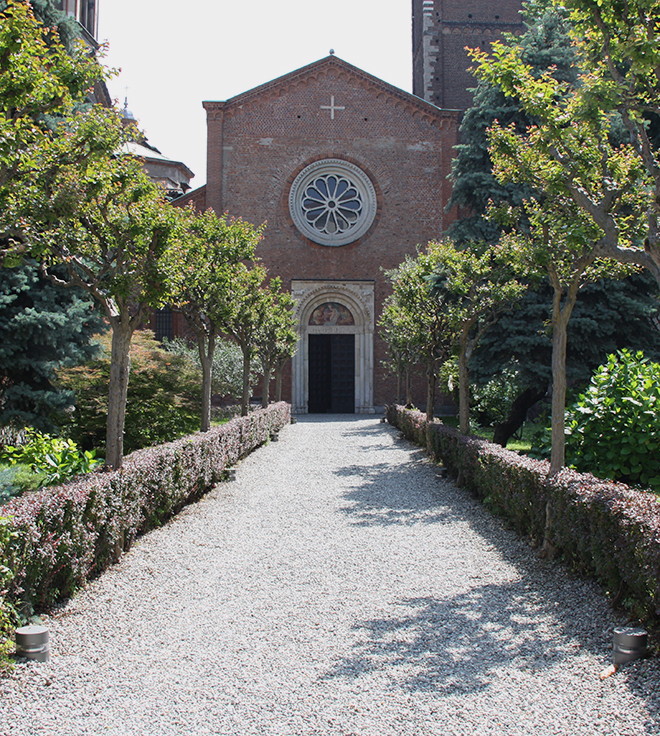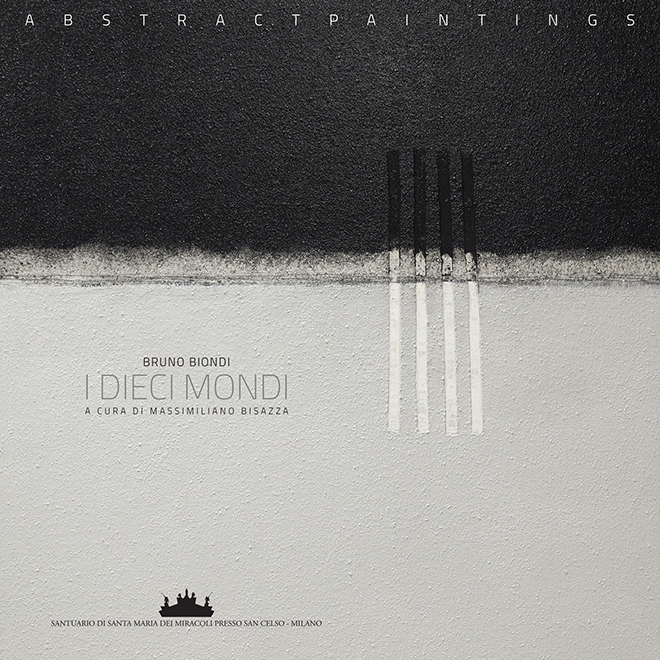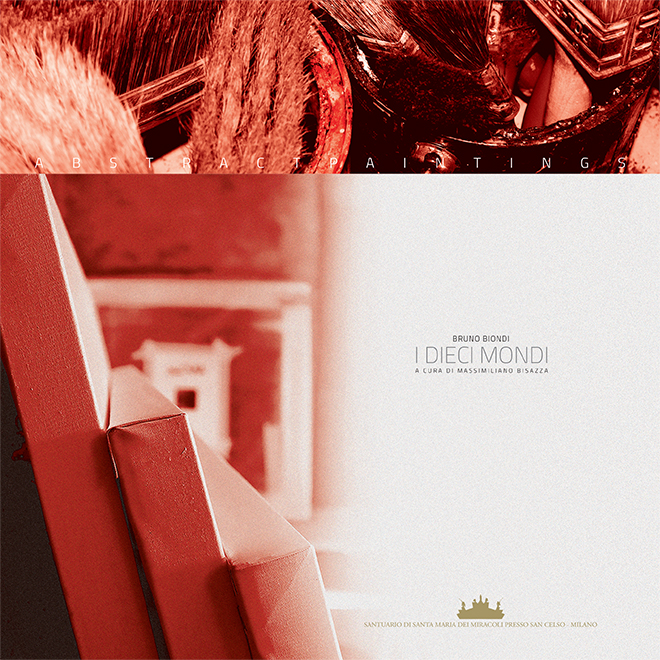News
May 2019
Solo exhibition May 28 - June 18


Ten worlds
“We think that harshness, arrogance, slavery, dangers in
the streets and in the heart, secrecy, stoicism, tempting art
and demonism of every sort, that all there is in the man of
evil, of tyranny, of the rapacious animal and the serpent,
serves the elevation of the species “man” as well as its
opposite.”
(Quote by Friedrich Nietzsche)
White and black are the foundations of Bruno Biondi’s
poetics. Without going to bother the usual preconceived
concepts of Yin and Yang or those of the dark side and the
bright side present in each of us; I deeply think I want to give
a much more personal and intimate reading to the work of
such an evocative artist. Looking at this latest two-colour
project, I immediately find an intense poetic connection
with Malevich’s “Black Square” and with his Suprematist
thought that has given so much to the incipit of the Russian
Vanguard and beyond. “The evocation aimed at pure
non-objectivity in the empty white of a free void” (cited
Malevich) is as inherent in Malevich’s black square as it is in
the creative act of the painter Biondi. The idea of
transforming the artist into the zero of the form is the
creation of a new non-objective realism. The act of painting
is therefore liberating and is freed from the concept of
aesthetics, and it goes further; placing at the centre of
creativity the pictorial act in itself and the sensitivity that
gets by those who paint and those who then become users.
Biondi is therefore not based on the representation of reality
but brings his works back to the essence of art which is,
therefore, an end in itself. The fusion of vertical concepts
and fields, or surfaces, is now a prominent factor. In some
works, we can see how the excavation becomes white if it
dwells on white and black if it is traced on black - as the artist
himself explains - and vice versa, in a mirror image.
However, the creative process does not stop there; it is in
constant evolution. In this perspective, what a single
element: color, flanked by the concept of verticality - which
is the typical emblem of this artist’s art - leads us to want to
reflect on the possibility of inner elevation (in a vertical
sense), towards the search for a light, a spiritual and
thaumaturgical evocation that looks to the purification of
the soul, from the painful past; freeing ourselves from
earthly suffering. Then here is Biondi’s past - artistic but also
human - returning through memory. The reference to the
works of the past is in front of us and is inexorable, indelible,
indestructible. If in the past exhibitions verticality was often
accompanied by the gesture of excavation in the table or the
canvas by the artist, in order to go further, even though a
liberating act; now the accent is placed more on the matrices
of black and white and then in the vertical line, thus
inserting a minimalist synthesis and approaching in a
decidedly more mature and synthetically directed way to the
senses and inner emotional worlds... It may seem that the
subject is expressed only by vertical concepts, but it is not so.
Looking more closely at the poetics and paintings of this new
Milanese exhibition, we will notice that the subject is also
the material research, which is the true genesis that allows
life to vertical concepts: thanks to the turning of whites and
blacks, of light, greys, of the dirty whites and the intrinsic
meanings arising from these inner landscapes. It is from this
reflection that the project of the “ten worlds” is born, ten
sensations that are weakened by vital states that can start
from the lowest worlds up to the highest, that is enlightened
(Hell, Greed, Animality, Anger, Humanity, Ecstasy, Study,
Partial enlightenment, Bodhisattva and finally
Buddhahood) which let their mutual possession emerge at
the same time. The Lotus Sutra is an essential Buddhist
teaching that exposes the mutual possession of the ten
worlds (which can be contained in one another allowing
consequently to illuminate even the lower worlds) to reveal
that ordinary people can manifest their Buddhahood so as
they are, without having to be reborn in another form or
another land. The true meaning of perceiving the ten worlds
within one’s mind, therefore, consists in manifesting the
world of Buddhahood - that is, the illuminated part of us, the
purest and highest world - that exists in one’s life. Looking at
the works of the artist, I can perceive the existence of all the
ten worlds in every single work and not only by
differentiating every single mood in the single picture. All
the spiritual worlds are contained in it and unfold from the
blacks of hell to the whites of enlightenment, passing
through our minds thanks to the sign of the excavation that
evokes the inner search. Verticality reminds us of the world
of study and research and so on... This happens for every
single inner world, aiming at reaching the summit; walking
more and more towards the other, towards that feeling of
balance and quiescence that from the state of latency turns
towards a mere manifest effect of inner peace to which the
artist longs deep in his heart and which is then the nemesis
as quoted by Nietzsche, therefore deliberately placed at the
beginning of this text. Then all that remains is to sink into
the setting of a Former Church, like that of San Celso in
Milan, a place that par excellence refers to what was once,
that is a place of prayer, of recollection, and that today
desecrated allows us to welcome this artistic exhibition that
is so intimately connected with the spirituality of each of us
and the artist.
We note the merging of a multitude of inner worlds; that
with the help of art help us to observe the idea of hope; that
hope that in a world full of violence and carelessness is
necessary as the cause of a better and altruistic future. The
verticality of the concepts expands beyond the canvas, also
excavating the edge. Blacks and blacks are therefore
affirming themselves without fear in colour management;
that fear that comes not from the artist’s pictorial capacity,
far from it; but from the fact that the artist always knows
where he starts but does not know where he will go in his
creative journey. Exactly as happened in the incubation of
this artistic project. Often black could silence the story,
suffocating it, but here the whites instead welcome us into
the narrative and lead us into a “different” world; capable of
making us reflect and dream at the same time.
Critical text by Massimiliano Bisazza.

Paper invitation. On the cover, artwork chosen for the
communication of the exhibition. “Vertical Concepts”
90x90 cm - 2019

Cover of the exhibition catalogue printed in no. 200 copies
Solo exhibition organized under the patronage of:


www.comune.milano.it/municipio1


Reviews.
Juliet - Contemporary Art Magazine Since 1980
Exibart - Art Events - Art Exhibitions - Art News
Vetrina - Showcase Events Milan
GeosNews - Geolocated news platform
Ok Art - Art, events, exhibitions, museums, galleries, fashion, shows.
Artinworld - The showcase for contemporary artists
Arte.go - Since 1994, Art has been on the move - exhibitions, events, reviews, performances, courses and competitions.
MilanoToday
Buonasera - Art and Culture
CuCo - Contemporary Art Exhibitions
Lobodilattice - Art and Culture Online since 2004
Untitled Magazine
ArteRaku - Exhibitions and events
Milanofotografo - Leisure and culture section